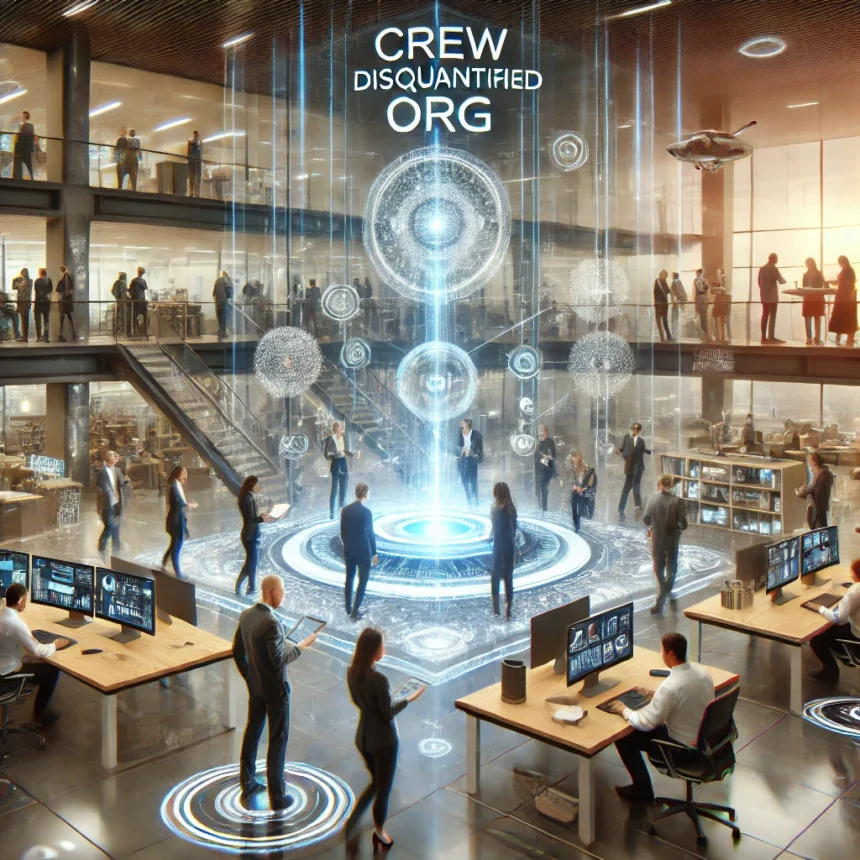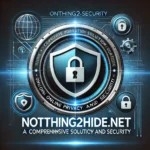In today’s fast-paced and evolving work environments, traditional organizational structures are being challenged. One emerging concept that is gaining attention is Crew Disquantified Org. This term represents a shift in how teams operate, moving away from rigid performance metrics and focusing on overall crew effectiveness. The idea behind this approach is to create a flexible, collaborative, and adaptive work culture where individuals contribute based on their strengths without being limited by predefined roles or quantifiable restrictions.
As organizations strive for innovation, efficiency, and agility, Crew Disquantified Org presents a new framework that can transform teamwork dynamics across industries. This article delves deep into the meaning of Crew Disquantified Org, its significance, applications, benefits, and potential challenges.
What Is Crew Disquantified Org?
The term Crew Disquantified Org can be broken down into three key components:
- Crew – A team of individuals working together toward a common goal.
- Disquantified – Removing rigid quantitative assessments or predefined role constraints.
- Org – Short for “organization,” referring to a structured entity that adopts this concept.
In essence, Crew Disquantified Org is an organizational approach where team members are not bound by fixed job descriptions or individual performance metrics. Instead, the focus is on collective efficiency, adaptability, and collaborative problem-solving. It encourages fluid role assignments, allowing individuals to take on different responsibilities based on real-time needs rather than rigid job roles.
This approach stands in contrast to traditional organizations where employees are measured by key performance indicators (KPIs) that often emphasize individual productivity rather than teamwork. By disquantifying crews, companies and organizations can harness the full potential of their workforce, leading to greater innovation, resilience, and productivity.
How Crew Disquantified Org Works
A Crew Disquantified Org operates on a dynamic and flexible structure. Instead of following strict hierarchies and job descriptions, team members work in a way that maximizes collective output. Here’s how it typically functions:
- Task-Based Assignments – Instead of assigning roles permanently, responsibilities are distributed based on skill, experience, and situational demands.
- Collaborative Decision-Making – Teams function through shared leadership, where decision-making is more democratic rather than dictated by rigid authority structures.
- Fluid Role Adaptation – Employees can shift between different tasks and responsibilities depending on what is required at the moment.
- Emphasis on Team Success Over Individual Metrics – The focus is on achieving team goals rather than measuring individual performance separately.
Industries That Benefit from Crew Disquantified Org
The principles of Crew Disquantified Org can be applied to a variety of industries, especially those that rely heavily on teamwork, adaptability, and real-time problem-solving.
Corporate and Business Teams
In corporate environments, traditional job roles often create silos where employees work in isolation. Adopting a Crew Disquantified Org model allows for cross-functional collaboration, where employees can contribute across multiple departments. This is particularly useful in project management, product development, and creative industries, where flexibility and teamwork drive innovation.
Aviation and Maritime Sectors
Airlines and maritime industries require highly synchronized teamwork. Pilots, cabin crews, ship captains, and sailors all operate under high-pressure situations where adaptability is crucial. A Crew Disquantified approach ensures that every team member can step in and take action based on the demands of the moment, rather than being confined to narrowly defined roles.
Emergency Response Teams
Firefighters, paramedics, and disaster relief teams operate in unpredictable environments where rigid hierarchies can slow down critical decision-making. By disquantifying crew roles, emergency response units can function more efficiently, ensuring that decisions are made quickly and resources are utilized effectively.
Technology and Agile Work Environments
In the technology sector, agile methodologies have already introduced a more fluid approach to teamwork. Crew Disquantified Org aligns with agile frameworks, allowing software developers, designers, and project managers to work interchangeably based on evolving project requirements. This helps in rapid problem-solving and innovation.
Advantages of Crew Disquantified Org
Organizations that embrace the Crew Disquantified Org model can experience numerous benefits:
Increased Efficiency
By eliminating rigid role assignments, teams can adapt faster to changing conditions and allocate resources more effectively. This ensures that work is done efficiently without unnecessary bottlenecks.
Enhanced Innovation and Creativity
When employees are encouraged to step beyond their fixed roles, they bring fresh perspectives to tasks. This fosters creativity and innovation, as individuals can contribute unique ideas from different angles.
Improved Team Morale and Engagement
Traditional performance metrics often create unnecessary pressure and competition. By focusing on collective success, Crew Disquantified Org promotes a healthier work culture where team members feel more valued and engaged.
Better Crisis Management
In high-pressure situations, rigid structures can be a hindrance. A disquantified crew ensures that roles can be reassigned instantly, making it easier to respond to challenges efficiently.
Challenges and Considerations
While Crew Disquantified Org offers many advantages, it is not without its challenges. Organizations looking to adopt this model must consider the following:
Lack of Clear Accountability
Without predefined roles, it can sometimes be difficult to assign responsibility for specific outcomes. Organizations need to implement clear communication and accountability measures to ensure efficiency.
Resistance to Change
Employees accustomed to traditional hierarchies may initially struggle with the transition. Proper training and change management strategies are essential for a smooth implementation.
Balancing Flexibility with Structure
While flexibility is key, some level of structure is still necessary to prevent confusion. Organizations must find the right balance between dynamic teamwork and organized workflow management.
How to Implement Crew Disquantified Org
For organizations interested in transitioning to this model, the following steps can help ensure success:
- Assess Organizational Readiness – Determine if the company’s structure and culture can support a more flexible work environment.
- Redefine Success Metrics – Move away from individual performance evaluations and focus on team-based performance indicators.
- Encourage Cross-Training – Provide employees with opportunities to learn different roles and skills so they can contribute flexibly.
- Foster a Collaborative Culture – Promote open communication, shared leadership, and teamwork.
- Utilize Technology for Coordination – Implement tools that help in task tracking, collaboration, and decision-making.
Read also: Bizhunet: The Ultimate Business Networking and Digital Solution
Conclusion
Crew Disquantified Org represents a transformational shift in how teams and organizations function. By moving away from rigid individual metrics and focusing on collective efficiency, organizations can foster a more dynamic, innovative, and adaptable workforce. While the transition may pose challenges, the benefits of enhanced collaboration, efficiency, and resilience make it a model worth exploring for future-ready organizations.
As industries continue to evolve, embracing a Crew Disquantified approach could be the key to unlocking new levels of productivity and teamwork. Organizations that prioritize agility, collaboration, and adaptability will undoubtedly thrive in an ever-changing world.






